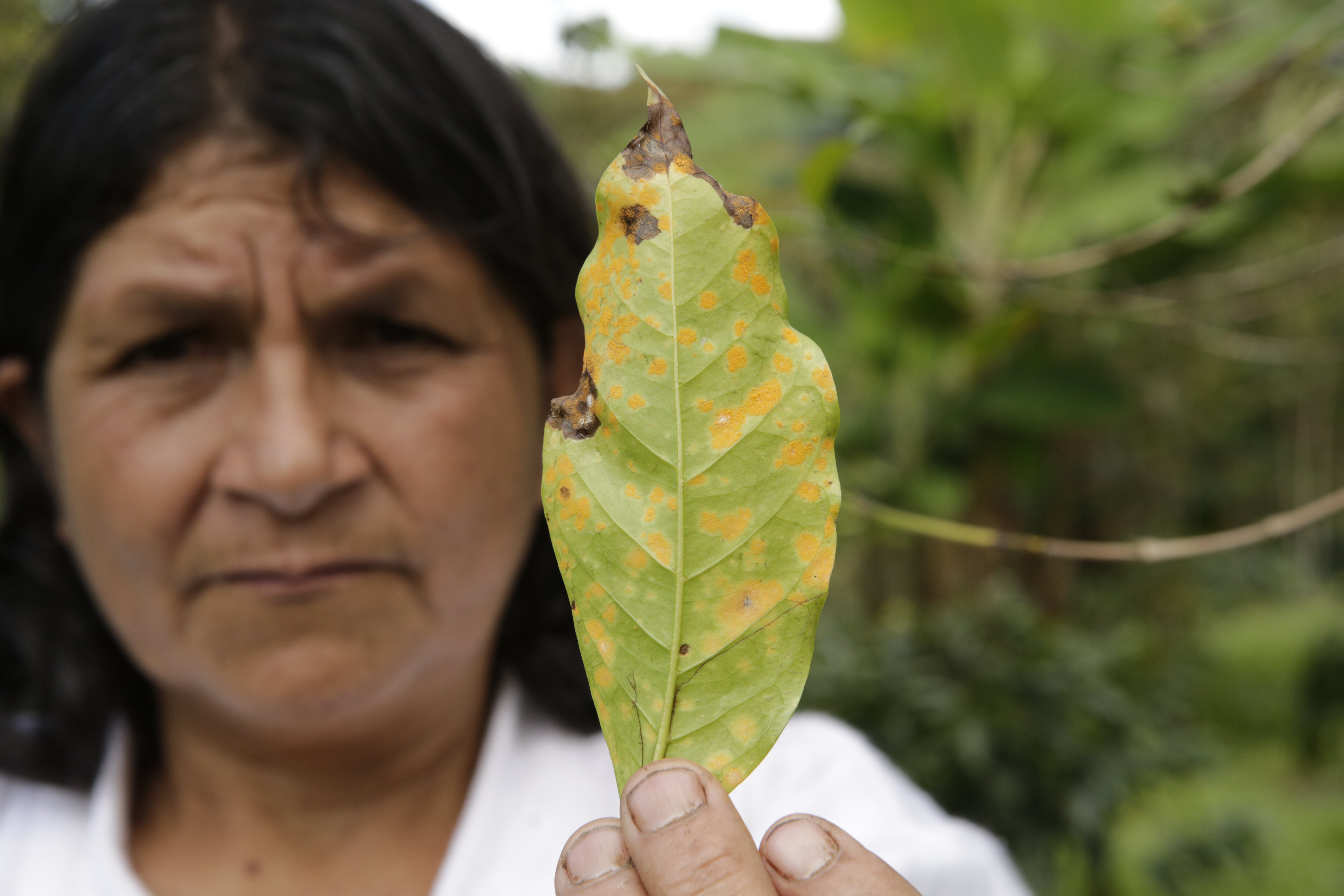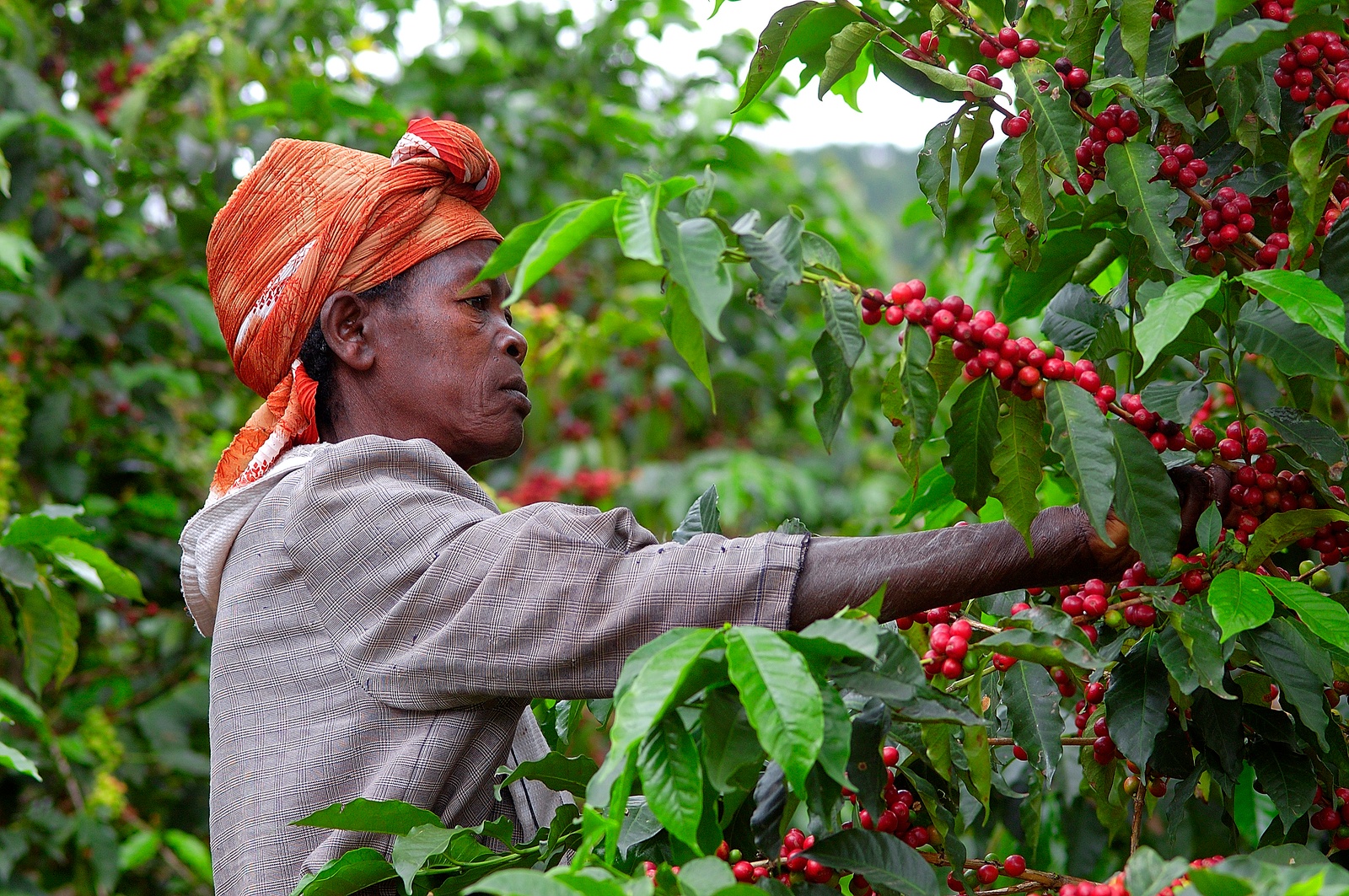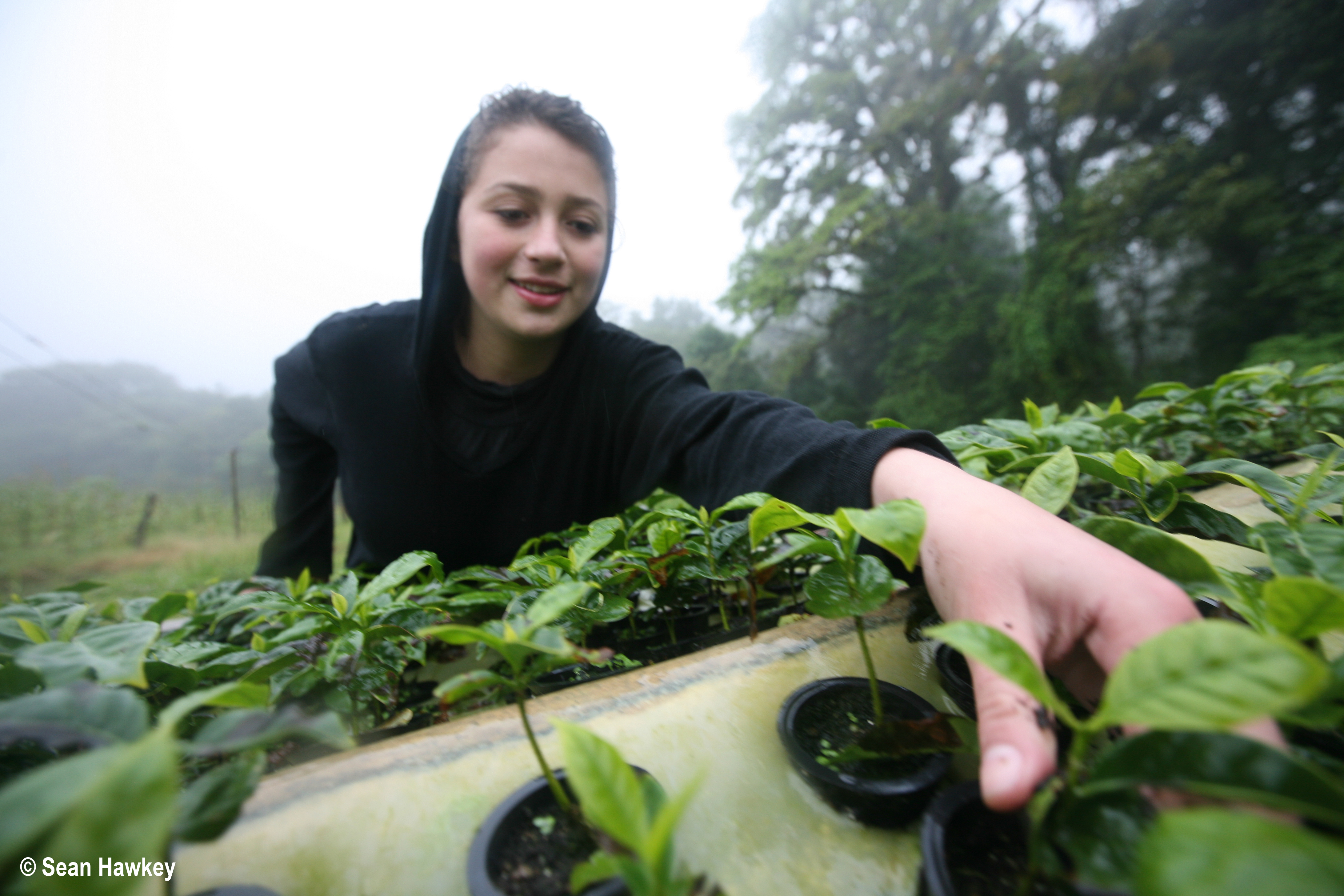
Maria Eufemia Madonado Ocaño holds a small leaf in her hands, mottled yellow where it should be vibrant and green. This leaf represents her livelihood, decimated by la roya—a fungus that develops when conditions are warmer and wetter than usual. The yellow spots are a symptom, but the disease is climate change.
Farmers are on the frontlines of our changing climate. Dependent on steady weather, water, and soil, they suffer more than most when these become unpredictable. When la roya spread throughout Latin America in 2012, coffee farmers like Maria saw their yields decrease by as much as 30 percent. For many, the recovery continues to this day. And there’s no telling when the next climate-related catastrophe will strike.
We can and should think of climate change as a threat to all of us. The consequences of continued global temperature rise are far-reaching: stronger storms, dangerous heat waves, sea-level rise, and large-scale migration. For farmers this translates to crop failure, income loss, and food insecurity.
If farmers are particularly vulnerable to climate change, the impact on women farmers is that much greater. Women make up 50 percent of the agricultural labor force and produce 60 to 80 percent of food crops in poorer parts of the world. But compared to their male counterparts, they have limited ability to overcome climate shocks. Why? Because, as is too often the case, women start out on an uneven playing field.

In most countries, male farmers achieve an average of 20 to 30 percent higher yields than women. As a result, women aren’t able to cultivate as much food for themselves and their families, and they earn lower wages from the crops they sell. Of course, women don’t have lower yields because they don’t work as hard as men. For a host of systemic reasons, they have less access to resources, inputs, and information. Most women farmers don’t own their land. They have higher levels of illiteracy, which may prevent them from acquiring information that could help with climate change adaptation. They are typically excluded from decision making, both inside and outside their homes. In agricultural enterprises, like coffee cooperatives, they are less likely to hold leadership or management positions.
Women farmers also face the double time burden that women all over the world contend with. They get up early to prepare food for the household and get children ready. After laboring all day, they are responsible for collecting water and firewood, and for preparing the evening meal. When ecosystems change and these resources are depleted by a changing climate, women must walk even farther and spend even more time retrieving them. This reinforces the cycle of poverty, making it virtually impossible that women and girls will have time for education or employment opportunities that might lead to a better future.
Understanding the ways that climate change affects women differently than men is vital. Solutions that are “gender-blind” are no solutions at all. It’s not just that they overlook key ways that women are more vulnerable to climate change; they also neglect women’s unique ability to be on the leading edge of climate change adaptation.
For example, rural women’s critical role in household management means they’re experienced in allocating limited resources for their family’s wellbeing. Research shows that women help their families adapt to environmental threats, and that they are adept at information sharing and community mobilization. Which means: if women can gain access to the knowledge and tools to combat climate change, they could help build the resilience of whole communities.

In 2012, Root Capital launched the Women in Agriculture Initiative (WAI) to promote greater economic opportunity for rural women by supporting small and growing agricultural businesses committed to gender inclusion. These businesses are a locally-rooted platform that collectively reach hundreds of thousands of women farmers, employees, and leaders. We believe they are the catalyst for transforming rural communities—making marginalized areas more vibrant, inclusive, and resilient.
In 2016, with support from the Wagner Foundation and IKEA Foundation, and in partnership with Value for Women, we developed a participatory model through which Root Capital works with agricultural businesses to identify, design, and implement projects to enhance women’s inclusion. We have since disbursed 12 Gender Equity Grants (GEGs) to enterprises in Kenya and Peru to help them make high-impact investments in women. Among other things, these grants enabled the businesses to provide childcare for women employees, launch savings and loans programs for their female members, and train women farmers in agricultural skills.
Now, with support from a long-time Women in Agriculture Initiative partner, we are launching three GEGs in Central America with a specific focus on helping women adapt to climate change. Again, we will work with selected agricultural enterprises to conduct a diagnostic exercise and design context-appropriate interventions. This time, we will help the businesses examine the intersection of gender and climate change, and will prioritize project proposals that support climate-related activities for women. With funding from the Aspen Network of Development Entrepreneurs, we will work with Value for Women to evaluate the impact of these interventions. And we will share what we learn so that other organizations can pursue enterprise-driven, gender-smart strategies for addressing climate change.
We can’t fight the global threat of climate change with one hand tied behind our back. It’s time to reset the playing field by investing in women farmers.

What do you think?